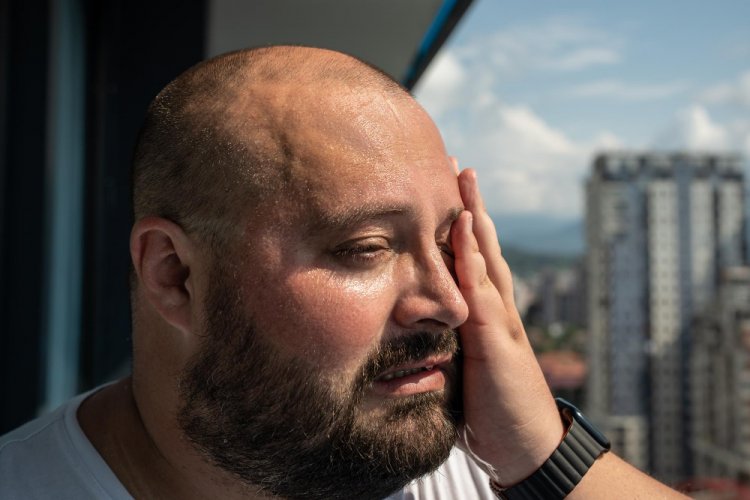Heat Stroke: Understanding the Deadly Consequences of Overheating
As temperatures soar, the risk of heat-related illnesses becomes increasingly prevalent. Among these conditions, heat stroke stands out as a severe and potentially life-threatening ailment. This article aims to delve deeper into the intricacies of heat stroke, exploring its causes, symptoms, treatment, and prevention methods.

What is Heat Stroke?
Heat stroke, also known as sunstroke, is the most severe form of heat-related illness. It occurs when the body's core temperature rises to dangerous levels, typically above 104°F (40°C), due to prolonged exposure to high temperatures, often accompanied by high humidity. This extreme elevation in body temperature can lead to organ damage and, if left untreated, can be fatal.
Causes of Heat Stroke
Several factors contribute to the onset of heat stroke:
- High Temperatures: Exposure to prolonged periods of intense heat, particularly during heatwaves, increases the risk of heat stroke.
- Physical Exertion: Engaging in strenuous activity in hot weather without adequate hydration and rest places additional strain on the body, making it more susceptible to heat stroke.
- Dehydration: Insufficient fluid intake, exacerbated by excessive sweating in hot and humid conditions, impairs the body's ability to regulate temperature, heightening the risk of heat stroke.
- Medical Conditions and Medications: Certain pre-existing medical conditions such as heart disease, obesity, diabetes, and medications that interfere with the body's ability to sweat or regulate temperature can predispose individuals to heat stroke.
- Age and Vulnerable Populations: Infants, young children, older adults, and individuals with compromised immune systems are at heightened risk of heat stroke due to their reduced ability to regulate body temperature effectively.
Symptoms of Heat Stroke
Recognizing the signs and symptoms of heat stroke is crucial for prompt intervention and treatment. Common indicators include:
- High Body Temperature: A core body temperature exceeding 104°F (40°C) is a hallmark sign of heat stroke.
- Altered Mental State: Confusion, disorientation, agitation, delirium, or loss of consciousness may occur as the brain is affected by the heat.
- Dry, Hot Skin: The skin may feel dry, hot, and flushed, with a lack of perspiration in some cases.
- Rapid Pulse: The heart rate may be elevated as the body attempts to cool itself down.
- Nausea and Vomiting: Digestive disturbances such as nausea, vomiting, and diarrhea can manifest in individuals with heat stroke.
- Throbbing Headache: Severe headaches, often described as throbbing or pounding, are common symptoms of heat stroke.
- Muscle Cramps: Painful muscle spasms, particularly in the legs, arms, or abdomen, may occur due to electrolyte imbalances caused by dehydration.
Treatment and Management
Immediate medical attention is imperative for individuals suspected of experiencing heat stroke. Treatment typically involves:
- Cooling the Body: Rapidly lowering the individual's body temperature is paramount. This may involve moving them to a shaded or air-conditioned area, removing excess clothing, and applying cool compresses or immersion in cool water.
- Rehydration: Intravenous fluids may be administered to restore electrolyte balance and hydration levels.
- Monitoring and Supportive Care: Continuous monitoring of vital signs and organ function is essential, with supportive measures such as oxygen therapy and medications to manage symptoms and prevent complications.
Prevention of Heat Stroke
Prevention is key to reducing the risk of heat stroke. Important preventive measures include:
- Stay Hydrated: Drink plenty of water throughout the day, even if you're not thirsty, and avoid beverages that can contribute to dehydration, such as alcohol and caffeinated drinks.
- Stay Cool: Seek refuge in air-conditioned environments during peak heat hours, wear lightweight, loose-fitting clothing, and use fans or cooling devices to maintain a comfortable temperature.
- Limit Outdoor Activity: Minimize strenuous physical activity during the hottest parts of the day, and take frequent breaks in shaded or cool areas when outdoors.
- Know the Warning Signs: Educate yourself and others about the signs and symptoms of heat stroke, and take immediate action if any are observed.
- Check on Vulnerable Individuals: Keep an eye on infants, young children, older adults, and those with chronic illnesses, as they are more susceptible to heat-related complications.
Conclusion
Heat stroke is a serious medical emergency that demands swift recognition, intervention, and treatment to prevent life-threatening consequences. By understanding the causes, symptoms, treatment options, and preventive strategies associated with heat stroke, individuals can take proactive steps to safeguard themselves and others during periods of extreme heat. Remember, staying hydrated, staying cool, and staying informed are vital components of heat stroke prevention.
#HeatStroke #Sunstroke #HighBodyTemperature #HeatRelatedIllness #HeatwaveDanger #Hyperthermia #HeatExhaustion #DehydrationRisk #HeatStrokeAwareness #StayCoolStaySafe #HydrateOrDissipate #PreventHeatStroke #HeatEmergency #KnowTheSigns #StayInformed #StayHydrated #HeatSafety #CoolingMeasures #SummerSafety #BeatTheHeat #HeatAwareness #HeatPrevention #HeatStrokePrevention #HeatStrokeTreatment #HeatStrokeSymptoms #HeatStrokeRiskFactors #HeatStrokeManagement #HeatStrokeAware #StayCoolOutThere #StaySafeInTheHeat #HeatWaveSafety #HotWeatherSafety #HeatWaveAwareness #HeatWavePrevention #StayCoolStayHealthy #SummerHeatSafety #SummerWellness #SummerHealthTips #StayCoolStayHydrated #HydrateAndProtect #HeatWavePreparedness #CoolDownInHotWeather #HeatStrokeEducation #HeatEmergencyPreparedness #HeatSafetyTips #HeatHealth #HealthySummer #SummerHealthAwareness #SummerWellnessTips #HeatAlert #CoolingTips #StayCoolStayHydrated
Disclaimer:
The information provided in this article is for educational purposes only and should not be considered medical advice. If you have any health concerns or are experiencing symptoms, it is important to consult with a healthcare professional, such as a doctor or clinic, for proper diagnosis and treatment. Always seek the advice of your doctor or other qualified health provider with any questions you may have regarding a medical condition. Do not disregard professional medical advice or delay in seeking it because of something you have read in this article.
What's Your Reaction?





















